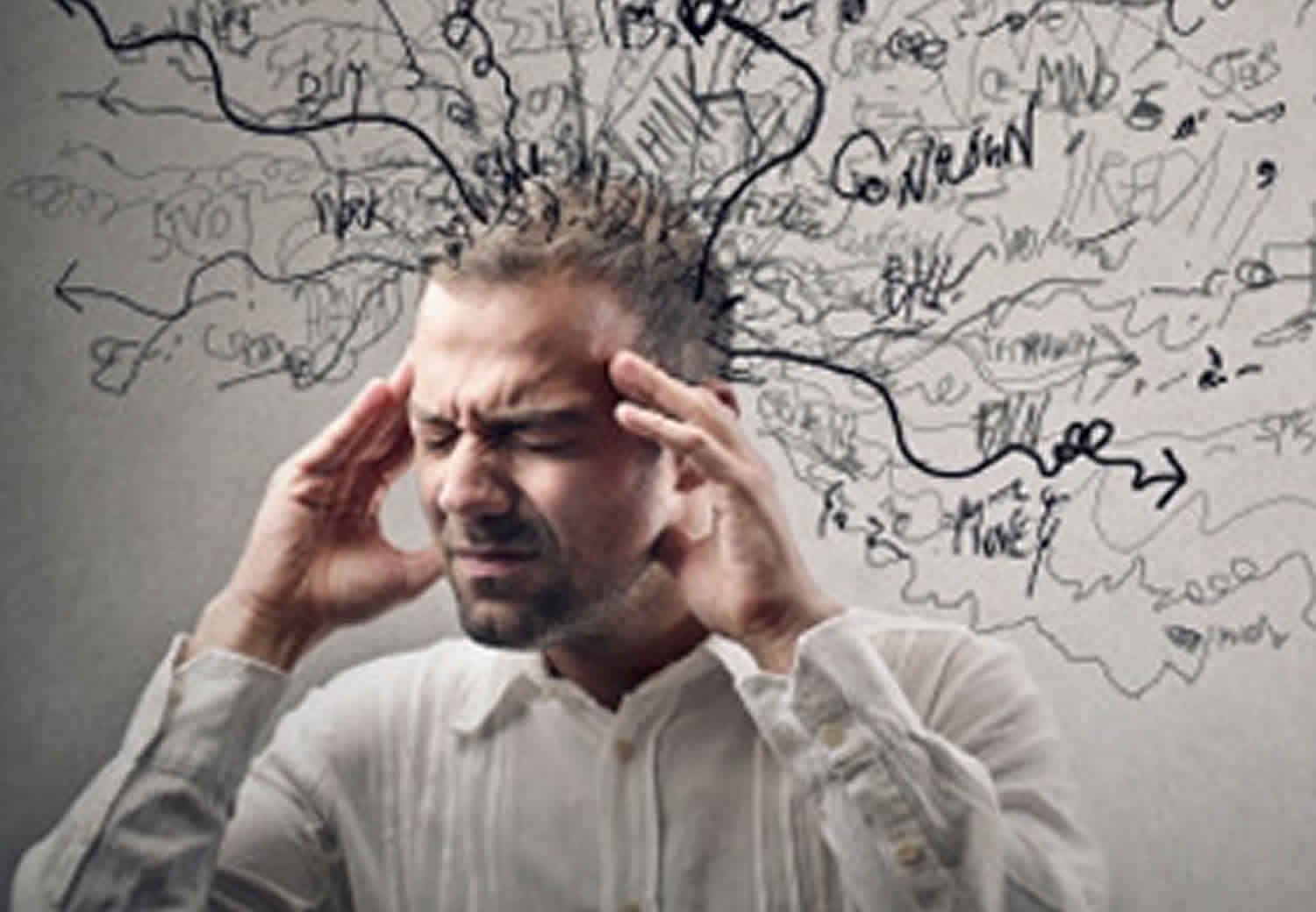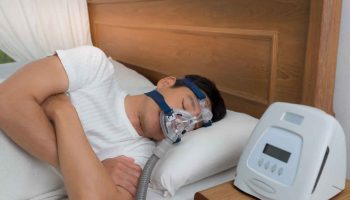Delusional disorder
Delusional disorder is characterized by irrational or intense belief(s) or suspicion(s) which a person believes to be true. These beliefs may seem outlandish and impossible (bizarre) or fit within the realm of what is possible (non-bizarre). Delusional disorder symptoms must last for 1 month or longer in order for someone to be diagnosed with delusional disorder.
A delusion is a fixed false belief based on an inaccurate interpretation of an external reality despite evidence to the contrary 1. The belief is not congruent with one’s culture or subculture, and almost everyone else knows it to be false 2. Cultural beliefs that may seem odd, but are widely accepted do not fit the criteria for being a delusion.
The lifetime morbid risk of delusional disorder in the general population has been estimated to range from 0.05 to 0.1 percent, based on data from various sources including case registries, case series, and population-based samples 1. According to the Diagnostic and Statistical Manual of Mental Disorders (DSM). under DSM–5, the current version of the DSM, the lifetime prevalence of delusional disorder is about 0.02% 3. The prevalence of delusional disorder is much rarer than other conditions like schizophrenia, bipolar disorder, and other mood disorders; this may be in part due to underreporting of delusional disorder as those with delusional disorder may not seek mental health attention unless forced by family or friends. Age mean age of onset is about 40 years, but the range is from 18 years to 90 years. Two of the most common types of delusions are delusions of grandeur or persecutory delusions. The persecutory and jealous type of delusion is more common in males, while the erotomanic type is more common in females.
The diagnosis of a delusional disorder occurs when a person has one or more non-bizarre (situations that can take place in real life, although not real but are possible) delusional thought for one month or more, that has no explanation by another physiological, substance-induced, medical condition or any other mental health condition. An individual’s cultural beliefs merit consideration before coming to the diagnosis. Cultural beliefs also impact the content of delusions.
Other than the delusions(s) the functionality is not impacted, and behavior is not obviously bizarre.
Delusional disorder types
Some of the most frequently encountered types of delusions are:
- Erotomanic type delusion also known as “ psychose passionelle”: a delusion that another person, more frequently someone of higher status, is in love with the individual 4. These patients are usually socially withdrawn, dependent, sexually inhibited with a poor level of social and/or occupational functioning. “Paradoxical Conduct” is an important characteristic wherein all denials of affection are rationalized as affirmations 5. Males with this type of delusion can be more aggressive 6.
- Grandiose type delusion (delusion of grandeur) also known as megalomania: delusions of inflated self-worth, great talent, power, knowledge, identity, or special relationship to a deity or famous person
- Jealous type delusion also known as “ Othello Syndrome”: delusions that the individual’s sexual partner is unfaithful. Jealous type delusion is more common in males; it can sometimes correlate with suicidal or homicidal ideations, and hence safety is an important consideration in evaluation and management 7.
- Bizarre type delusion: a delusion involving a phenomenon that is impossible, not understandable and unrelated to normal life.
- Persecutory type delusion: delusions that the person (or someone to whom the person is close) is being malevolently treated in some way. The central theme is being conspired against, attacked, harassed, obstructed in pursuit of long-term goals. This is one of the most common types of delusions and patients can be anxious, irritable, aggressive or even assaultive – some patients may be litigious.
- Somatic type delusion also called monosymptomatic hypochondriacal psychosis: delusions that the person has some physical defect or general medical condition. The reality impairment is severe. The patient is unarguably convinced of the severity of symptoms. The most common type of somatic delusions is that of infestation example with parasites (delusion of parasitosis), body dysmorphic delusion and those of body odor or halitosis. These patients also have anxiety and nervousness.
- Thought broadcasting type delusion: a delusion that one’s thought is projected and perceived by others
- Thought insertion type delusion: a delusion that one’s thought is not one’s own but inserted into their mind by an external source or entity
- Mixed type delusion: delusions characteristic of more than one of the above types but no one theme predominates
- Unspecified type: sometimes a predominant delusion cannot be identified. Capgras syndrome is a delusional syndrome where there is a belief that a known person has been replaced by an impostor 2. Cotard syndrome is when a patient believes he has lost his possessions, status, and even bodily organs 2.
Delusional disorder causes
The exact cause of delusional disorder is unknown 8. Delusional disorder is relatively rare, has a later age of onset as compared to schizophrenia and does not show a gender predominance. The patients are also relatively stable.
Many biological conditions like substance use, medical conditions, neurological conditions can cause delusions. Delusional disorder involves the limbic system and basal ganglia in those with intact cortical functioning 3.
Hypersensitive persons and ego defense mechanisms like reaction formation, projection and denial are some psychodynamic theories for delusional disorder. Social isolation, envy, distrust, suspicion, and low self-esteem are some of the factors which when becoming intolerable leads to a person seeking an explanation and thus form a delusion as a solution 8.
Immigrants with language barrier, deaf and visually impaired persons as well as the elderly are special populations who are more vulnerable to delusions.
Delusional disorder symptoms
Delusional disorder is characterized by the presence of either bizarre or non-bizarre delusions which have persisted for at least one month. Non-bizarre delusions typically are beliefs of something occurring in a person’s life which is not out of the realm of possibility. For example, the person may believe their significant other is cheating on them, that someone close to them is about to die, a friend is really a government agent, etc. All of these situations could be true or possible, but the person suffering from this disorder knows them not to be (e.g., through fact-checking, third-person confirmation, etc.). Delusions are deemed bizarre if they are clearly implausible, not understandable, and not derived from ordinary life experiences (e.g., an individual’s belief that a stranger has removed his or her internal organs and replaced them with someone else’s organs without leaving any wounds or scars). Delusions that express a loss of control over mind or body are generally considered to be bizarre and reflect a lower degree of insight and a stronger conviction to hold such belief compared to when they are non-bizarre. Accordingly, if an individual has bizarre delusions, a clinician will specify “with bizarre content” when documenting the delusional disorder.
People who have delusional disorder generally don’t experience a marked impairment in their daily functioning in a social, occupational, or other important setting. Outward behavior is not noticeably bizarre or objectively characterized as out-of-the-ordinary.
The delusions can not be better accounted for by another disorder, such as schizophrenia, which is also characterized by delusions (which are bizarre). The delusions also cannot be better accounted for by a mood disorder, if the mood disturbances have been relatively brief.
Patients usually well-nourished, appropriately groomed. May seem odd, suspicious, can be litigious. Patients seek an ally in the clinician, but it is important not to accept the delusion as it eventually results in confusing the patient’s reality and leads to distrust 3.
- Mood: Mood is usually congruent with the delusion, for example, a grandiose patient may be euphoric, or a paranoid patient may be anxious. Mild depressive symptoms are present 9.
- Perceptions: Usually no abnormal perceptions are present. Auditory hallucinations may be present in some.
- Thought: This is the primary abnormality in delusional disorder. The delusions are not bizarre and are clear as well as systematic for example a cheating spouse, persecutory delusions. It is essential to check the patient’s belief before concluding it to be a delusion. Some patients are verbose and circumstantial when describing their delusion. Bizarre delusions more likely correlate with schizophrenia 3.
- Cognition: Memory and cognition are usually intact, and patients are oriented unless there is a specific delusion about person, place or time.
- Impulse control: It is important to evaluate for suicidal or homicidal ideations and plan. If there is a history of aggression with adverse action, then hospitalization should be considered.
- Insight and judgment: Most commonly patients have no insight regarding their delusion. Judgment is assessable by a history of past behavior and future plan.
Delusional disorder diagnosis
Specific diagnostic criteria
- Delusions lasting for at least 1 month’s duration.
- Criterion A for schizophrenia has never been met. Note: Tactile and olfactory hallucinations may be present in delusional disorder if they are related to the delusional theme. Criterion A of schizophrenia requires two (or more) of the following, each present for a significant portion of time during a 1-month period (or less if successfully treated):
- delusions
- hallucinations
- disorganized speech (e.g., frequent derailment or incoherence)
- grossly disorganized or catatonic behavior
- negative symptoms, i.e., affective flattening, alogia, or avolition
- Note: Criteria A of schizophrenia requires only one symptom if delusions are bizarre or hallucinations consist of a voice keeping up a running commentary on the person’s behavior or thoughts, or two or more voices conversing with each other.
- Apart from the impact of the delusion(s) or its ramifications, functioning is not markedly impaired and behavior is not obviously odd or bizarre.
- If mood episodes have occurred concurrently with delusions, their total duration has been brief relative to the duration of the delusional periods.
- The disturbance is not due to the direct physiological effects of a substance (e.g., a drug of abuse, a medication) or a general medical condition.
Although there is no set of labs required for delusional disorder like most other psychiatric disorders. Imaging or laboratory tests should be considered to rule out any organic causes. Substance-induced conditions should be ruled out by getting a urine drug screen. After an organic cause is ruled out a clinical exam should be completed. A clinician would do an assessment and ask further questions about their delusions. During the assessment a complete mental status exam should be done. Interviewing family members and friends should be considered because they can provide further details about the delusions and more importantly a time line of the presenting symptoms.
Delusional disorder treatment
The treatment of the delusional disorder is difficult considering the lack of insight. A good doctor-patient relationship is key to treatment success. Treatment includes psychotherapy by establishing trust and building a therapeutic alliance. Treatment response is better when combining psychotherapy with psychopharmacology.
Psychotherapy
Psychotherapy is usually the most effective help in person suffering from delusional disorder. The overriding important factor in this therapy is the quality of the patient/therapist relationship. Trust is a key issue, as is unconditional support. If the client believes that the therapist really does think he or she is “crazy,” the therapy can terminate abruptly. Early in the therapy, it is vital not to directly challenge the delusion system or beliefs and instead to concentrate on realistic and concrete problems and goals within the person’s life.
Once a firm, supportive therapeutic relationship has been established, the therapist can begin reinforcing positive gains and behaviors the individual makes in his or her life, such as in educational or occupational gains. It is important to reinforce these life events (such as getting a job), because it reinforces in the patient a sense of self-confidence and self-reliance.
When the client has begun to feel more secure in their social or occupational world, then more productive work can be accomplished in therapy. This involves the gradual but gentle challenging of the client’s delusional beliefs, starting with the smallest and least-important items. Occasionally making these types of gentle challenges throughout therapy will give the clinician a greater understanding of how far along the individual has come. If the patient refuses to give up his or her delusion beliefs, even the smallest ones, then therapy is likely to be very long-term. Even if the client is willing, therapy is likely to take a fair amount of time, from at least 6 months to a year.
Clinicians should always be very direct and honest, especially with people who suffer from delusion disorder. Professionals should be even more careful than usual not to impinge on the client’s privacy or confidentiality, and to say plainly what they mean in therapy sessions. Subtlety and sarcasm may be easily misinterpreted by the patient. Therapy approaches which focus on insight or self-knowledge may not be as beneficial as those stressing social skills training and other behaviorally- and solution-oriented therapies.
Medications
Suggesting the use of medication for this disorder, while possibly indicated to help temporarily relieve the delusions, is usually difficult. The client may be suspicious of any professional suggesting the use of a medication and therefore this treatment approach (and successful maintenance of the individual on the medication) is problematic. There are few studies done which confirm the use of any specific medications for delusional disorder.
Anti-psychotic medication is the preferred medication used, though, although it is only marginally effective. Patient’s history of medication compliance is the best guide to select appropriate antipsychotic medication. An antipsychotic should be started for a trial period of 6 weeks after which there is an evaluation of the effectiveness of the medication. Start a low dose and titrate up as needed. Another drug from another class can be tried after six weeks if no benefit is noted from initial treatment 10.
Though not a primary indication, drugs like lithium, valproic acid and carbamazepine can be considered as adjunct treatment if monotherapy with antipsychotics fails.
Hospitalization should be avoided at all costs, since this will usually go to reinforce the individual’s distorted cognitive schema. Partial hospitalization and/or day treatment programs are preferred to help manage the individual under close supervision on a daily basis.
Delusional disorder prognosis
The prognosis of delusional disorder is better with treatment and medication compliance. Almost 50% of patients have a full recovery; more than 20% of patients report a decrease in symptoms and less than 20% of patients report minimal to no change in symptoms. A good prognosis is also related to higher social and occupational functioning, early onset before age 30 years, female, sudden onset of symptoms and short duration 11.
- Joseph SM, Siddiqui W. Delusional Disorder. [Updated 2019 Jun 4]. In: StatPearls [Internet]. Treasure Island (FL): StatPearls Publishing; 2019 Jan-. Available from: https://www.ncbi.nlm.nih.gov/books/NBK539855[ ↩][ ↩]
- Currell EA, Werbeloff N, Hayes JF, Bell V. Cognitive neuropsychiatric analysis of an additional large Capgras delusion case series. Cogn Neuropsychiatry. 2019 Mar;24(2):123-134.[ ↩][ ↩][ ↩]
- Kalayasiri R, Kraijak K, Mutirangura A, Maes M. Paranoid schizophrenia and methamphetamine-induced paranoia are both characterized by a similar LINE-1 partial methylation profile, which is more pronounced in paranoid schizophrenia. Schizophr. Res. 2019 Jun;208:221-227.[ ↩][ ↩][ ↩][ ↩]
- Kelly BD. Love as delusion, delusions of love: erotomania, narcissism and shame. Med Humanit. 2018 Mar;44(1):15-19.[ ↩]
- Faden J, Levin J, Mistry R, Wang J. Delusional Disorder, Erotomanic Type, Exacerbated by Social Media Use. Case Rep Psychiatry. 2017;2017:8652524[ ↩]
- Leffa DT, Panzenhagen AC, Salvi AA, Bau CHD, Pires GN, Torres ILS, Rohde LA, Rovaris DL, Grevet EH. Systematic review and meta-analysis of the behavioral effects of methylphenidate in the spontaneously hypertensive rat model of attention-deficit/hyperactivity disorder. Neurosci Biobehav Rev. 2019 May;100:166-179.[ ↩]
- Kataoka H, Sugie K. Delusional Jealousy (Othello Syndrome) in 67 Patients with Parkinson’s Disease. Front Neurol. 2018;9:129.[ ↩]
- Mendez I, Axelson D, Castro-Fornieles J, Hafeman D, Goldstein TR, Goldstein BI, Diler R, Borras R, Merranko J, Monk K, Hickey MB, Birmaher B. Psychotic-Like Experiences in Offspring of Parents With Bipolar Disorder and Community Controls: A Longitudinal Study. J Am Acad Child Adolesc Psychiatry. 2019 May;58(5):534-543.e6[ ↩][ ↩]
- Cella M, He Z, Killikelly C, Okruszek Ł, Lewis S, Wykes T. Blending active and passive digital technology methods to improve symptom monitoring in early psychosis. Early Interv Psychiatry. 2019 Feb 28.[ ↩]
- Humpston CS, Adams RA, Benrimoh D, Broome MR, Corlett PR, Gerrans P, Horga G, Parr T, Pienkos E, Powers AR, Raballo A, Rosen C, Linden DEJ. From Computation to the First-Person: Auditory-Verbal Hallucinations and Delusions of Thought Interference in Schizophrenia-Spectrum Psychoses. Schizophr Bull. 2019 Feb 01;45(45 Suppl 1):S56-S66.[ ↩]
- Mendez I, Axelson D, Castro-Fornieles J, Hafeman D, Goldstein TR, Goldstein BI, Diler R, Borras R, Merranko J, Monk K, Hickey MB, Birmaher B. Psychotic-Like Experiences in Offspring of Parents With Bipolar Disorder and Community Controls: A Longitudinal Study. J Am Acad Child Adolesc Psychiatry. 2019 May;58(5):534-543.e6.[ ↩]





